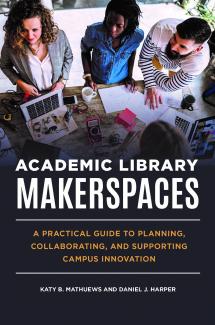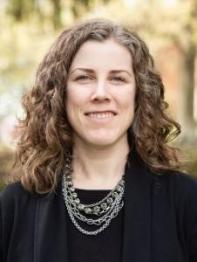Makerspaces Publication Moves Beyond Equipment Lists
Across the nation, universities are maximizing their impact on student learning by fostering a collaborative community of makerspace labs to immerse multidisciplinary interaction—and students, eager for collaborative fabrication, are drawn to makerspaces to find others ignited by similar creative endeavors.
That hunger led Katy Mathuews and Daniel Harper to collaboratively write, “Academic Library Makerspaces: A Practical Guide to Planning, Collaborating and Supporting Campus Innovation” (2020), with the intention of offering
pragmatic guidebook to programming and basic design principles.
“We talked about this idea that an equipment list seemed to be driving the design of makerspaces, so we wanted to take a very different approach,” said Harper, an assistant professor of interior architecture in the College of Fine Arts. “And, ‘What are those things that make it both inviting and functional to use?’”
Although Harper and Mathuews come from very distinct backgrounds, they make a good collaborative fit with complementary points of view about the natural balance of innovative student spaces on campus.
“Dan’s perspective was valuable in providing guidance on the planning and design of makerspaces,” said Mathuews, head of collections assessment and access and the interim head of regional library managers at University Libraries. “So, I came in with, ‘Okay, once you have it set up, then what do you do?’ The chapters I wrote have to do with programming, advocacy and assessment.”
Even in today’s global climate with the Covid-19 pandemic impacting everyday student life, the book carefully and smartly talks about planning makerspaces.
“This is still a relevant topic because what we are seeing is that students are hungry to be together,” explains Harper. “We ‘make’ to find solutions to problems, so this is still near and dear to our hearts. We cannot just abandon ideas of collaboration and doing things together in a space. [What] we need to do is to think, ‘How do we do it differently now?’”
And, many of the same contexts discussed in the book can also be applied online.
“There is an opportunity for virtual makerspaces, and developing online environments … [because] there is a lot of training and workshops that go into helping people use equipment, and lot of that can happen in the electronic environment,” explained Mathuews. “Makers could meet together in a virtual space, if they were not able to get together in a physical space. The same contexts [in the book] can be applied to a virtual environment as well.”
To learn more contact Katy Mathuews or Daniel Harper.
Book cover courtesy of Libraries Unlimited


